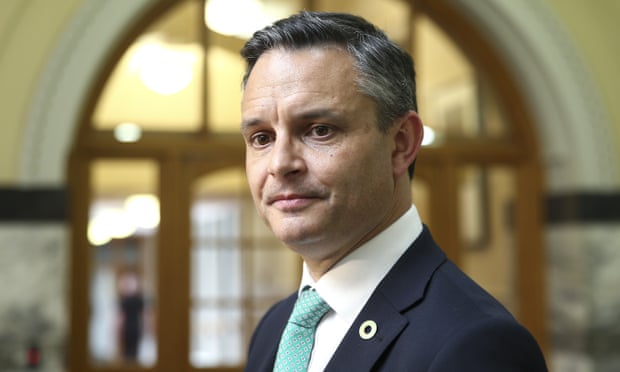Climate minister says the aim is to equip people ‘so that when climate events occur their lives can continue’

New Zealand has released its first national plan to prepare for the floods, fires and rising seas it expects to be unleashed by the climate crisis in the coming years.
Climate minister James Shaw, releasing the plan on Wednesday, said that while New Zealand would do its best to start reducing emissions, it was also preparing for a likely scenario of enormous climate disruption, and said it was “crucial” the country was prepared.
“We have already seen what can unfold. Severe weather events that had previously seemed unthinkable, even only a few years ago, are now happening at a pace and intensity we have never experienced before,” he said. The plan’s release comes after weeks of wild weather and flooding across New Zealand.
“Even with 1.5 degrees of warming, we are going to see the impacts of climate change on our communities and the way we live our lives,” Shaw said.

The national Climate Adaptation plan is the country’s first, and is a sprawling document that provides a roadmap for trying to protect infrastructure, housing, cities and cultural treasures as the planet heats.
Much of the plan is focused on preparing people, businesses, local governments and developers by ensuring they are adequately informed of risks and have to account for those risks in the planning process. Some of the changes include forcing councils to provide information about climate risks to prospective homebuyers, making councils account for climate change in planning regulations, and creating national mapping and public portals for people to see up-to-date information on how the climate crisis will affect their area.
“Our government has taken steps to support those communities affected, and will continue to do so,” Shaw said. “But rather than having to deal with these events as and when they happen, what people want are the tools to prepare, so that when climate events occur their lives can continue.”
What the plan doesn’t provide, however, is an answer to one of the most crucial questions facing the country: when houses, streets or entire communities become uninhabitable due to climate change, who pays to shift them?
The question of “managed retreat” – who foots the bill when sea level rise or flooding renders a community unsafe or uninsurable – has become increasingly pressing in New Zealand. One in seven New Zealanders, or 675,000 people, live in areas prone to flooding, and another 72,065 live in areas projected to be subject to extreme sea level rise. A 2020 government-funded report by Deep South Challenge – a national science collaboration – found at least 10,000 homes in New Zealand’s biggest cities would be in effect uninsurable by 2050. The government has committed to legislation on managed retreat by the end of 2023.
Scientists say the plan, while welcome, is light on detail.
“Paucity remains in some of the details,” said Dr Luke Harrington, senior lecturer in climate change at University of Waikato. “There also remains uncertainty about how a warming planet will modify climate hazards at the neighbourhood scale. Some of these uncertainties are unavoidable, but many can be reduced if the right scientific questions are asked. Unfortunately, this is not one of the knowledge gaps identified,” he said.
Dr Nick Cradock-Henry, a senior scientist at Manaaki Whenua – Landcare Research, said the new plan was “overdue, but welcome”.
“As we clean up following recent flooding, and face another potentially record-breaking year of extremes, this plan is a reminder that we still have a long way to go,” he said. “Adaptation to climate change is one of the most complex societal and environmental challenges we face, but with this plan we are at least moving in the right direction.”
